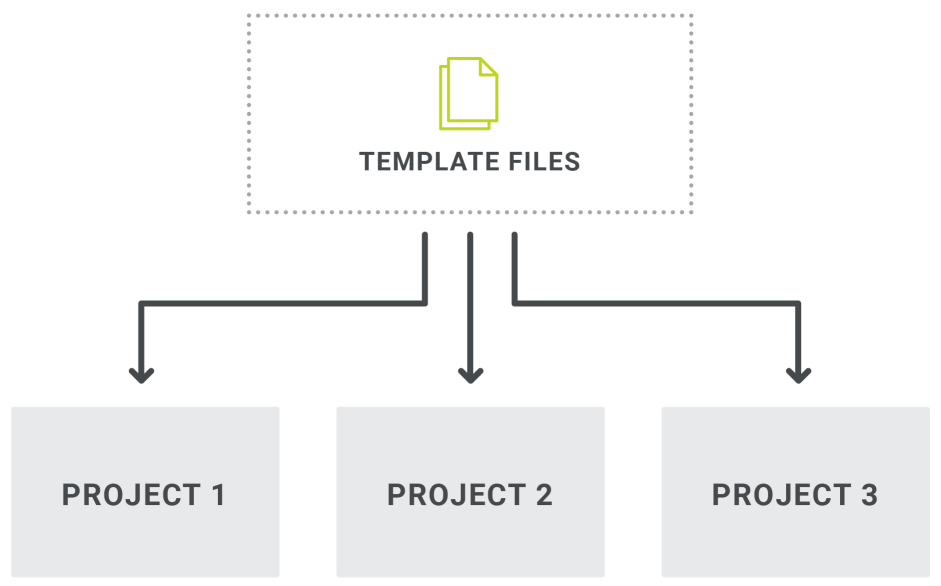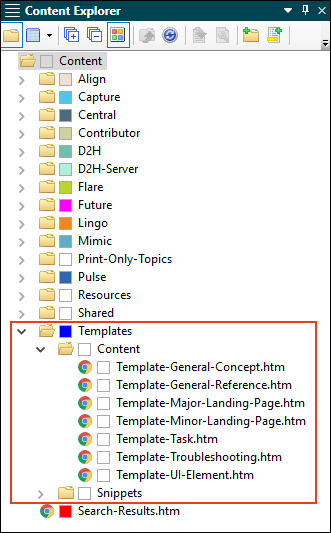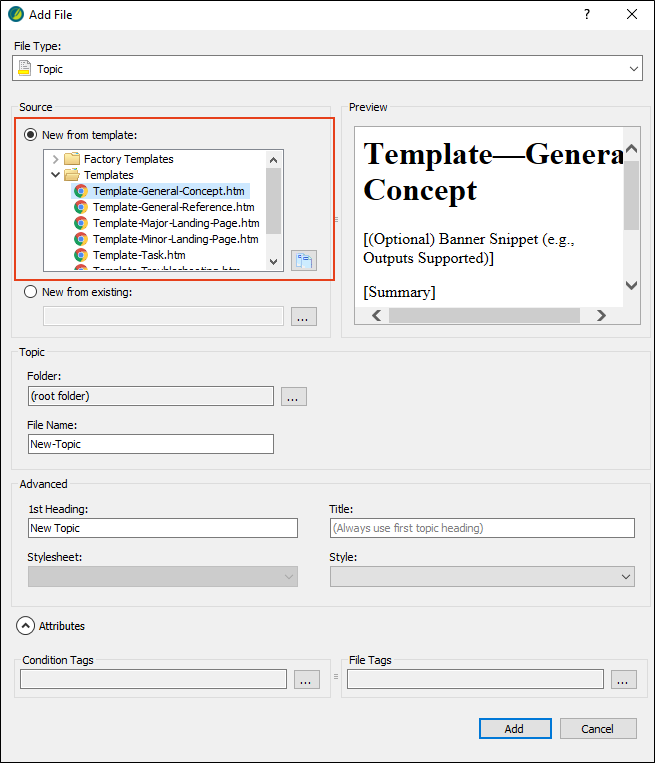A template is an existing project or file that serves as the basis for a new one, providing preset content, settings, or formatting.
So after you create template files, you can store them anywhere on your computer or network. From there, you and other authors can access them when creating new files within Flare Desktop.
[Menu Proxy — Headings — Online — Depth3 ]
Pros and Cons
|
Pros |
|---|
|
Creating your own templates can help with consistency in the structure of your topics and other files. |
|
Templates are especially useful when you are working with a team of writers, which ensures everyone adheres to a particular structure or set of content rather than each person creating everything independently. |
|
Cons |
|---|
|
Over time, your standards, formatting, and content for templates might change, which means someone needs to keep the templates up to date. |
|
If templates are changed now and then, those edits will not automatically be propagated to existing topics or other files. You would need to update existing files manually. |
What the MadCap Documentation Team Does
We created skeleton versions of each of the types of topics we use (see Types of Topics):
- Concept
- Major landing page
- Minor landing page
- General concept
- Task
- Reference
- General reference
- UI element
- Troubleshooting
These skeleton versions contain only the content that should always be used when a particular kind of topic is created—often some standard text and drop-downs in a certain order.
Since the vast majority of our files and content are stored in our main Shared project, we created a folder in the Content Explorer to store all of these topics templates, plus some snippet templates that are used with them. With source control, we know that each writer has access to the latest version of the templates, although they do not change often.
When writers create a new topic, they can choose one of these topic templates so that the necessary pieces are already in place.




